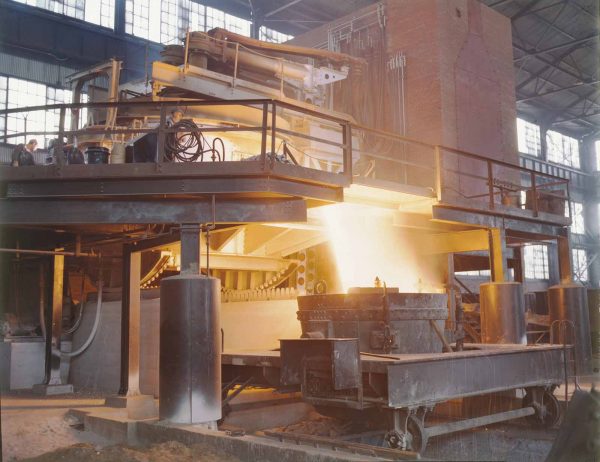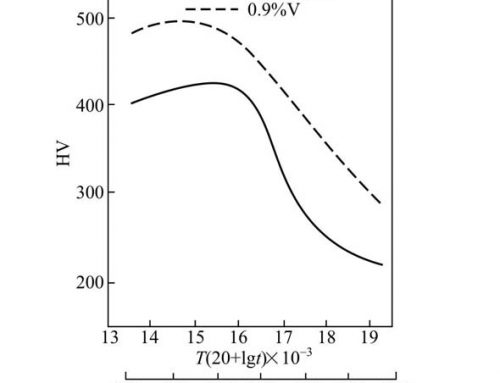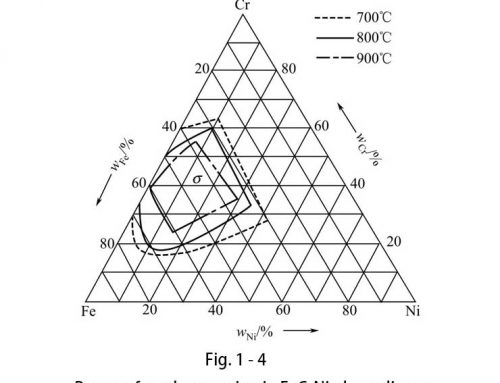The invention of stainless steel actually began at the end of the 18th century, stemming from the discovery of chromium. Since then, research on chromium and chromium alloys has been ongoing and alloys with stainless properties have been developed. After entering the 20th century, the research, development and production of stainless steel have developed vigorously. The developed European and American craftsmen represented by Germany, France, the United Kingdom, and the United States have achieved a series of research results, and they have also rapidly realized industrial production.

The invention of stainless steel has extremely important significance in the history of metallurgy. This is not only reflected in the birth of a new steel type, but also more importantly, it has made steel more widely used. Although there are many types of stainless steel currently used, it can be said that these steels were developed on the basis of three basic stainless steels invented in the early 20th century, namely austenitic, martensitic, and ferritic stainless steels.
Since then, the research and development of stainless steel has made greater progress. In the 1930s, France developed a duplex stainless steel; in the mid-1930s, the United States developed a precipitation hardening stainless steel, forming 5 basic stainless steel types. Later, many kinds of stainless steels suitable for various corrosive environments, such as nickel-saving stainless steel, high-purity ferritic stainless steel, ultra-low carbon austenitic stainless steel, and maraging stainless steel, appeared.
With the research and development of stainless steel, its production technology has also greatly developed, especially the smelting technology. The industrial production of stainless steel has been based on electric arc furnace melting. However, it is difficult to produce low carbon 188 stainless steel by arc furnace melting. For this reason, a high-frequency induction furnace is used, but there are problems such as small furnace capacity, low productivity, high raw material requirements, and high costs. Afterwards, an Eru furnace was used. First, ordinary scrap steel was melted, iron ore or scale was added for oxidative decarburization, and then low-carbon ferrochrome was added. During the smelting process during this period, it was almost impossible to use stainless steel scrap.
In order to recover and use the continuously accumulated stainless steel scrap, an oxygen steelmaking method was developed for stainless steel production. Oxygen steelmaking not only contributes to the mass production and cost reduction of stainless steel, but also smelts ultra-low carbon 188 stainless steel with a carbon content of less than 0.03% that resists intergranular corrosion. Oxygen steelmaking has thus developed rapidly.
In the 1950s, Germany began to try the method of refining molten steel molten in atmospheric pressure in vacuum for stainless steel production. Subsequently, the DH method and the RH method with simple processes were developed. Japan introduced these two technologies, developed a technology for blowing oxygen into a vacuum tank, established a stainless steel melting process using an oxygen converter and RHOB, and used it for industrial production in 1972. Subsequently, a mass production process for degassing with RH equipment after top-bottom re-blow converter smelting was developed, and began to be used for production in 1981.
In order to develop a method for decarburization refining under conditions that minimize the oxidation of chromium, Germany in 1967 proposed a VOD (VacuumOxygenDecarburization) technology for high-chromium stainless steel refining outside the furnace by blowing oxygen and decarburization under vacuum conditions and stirring with argon. Japan introduced this technology and accordingly realized the “LDVac” method for the final decarburization in the vacuum container after the pre-decarburization in the converter and the “EloVac” method for the pre-decarburization in the electric furnace. Furthermore, the VOD method was improved to produce ultra-pure ferritic stainless steel with C + N <0.01%.
Along with the development of the VOD method, the AOD (ArgonOxygen Decarburization) method using inert gas decarburization was successfully tested in 1968. Later, a double-layer spray gun with argon gas passing through the outer layer of the tube and oxygen inside the tube was developed, enabling the process to achieve industrial production. The AOD method does not require vacuum, so the equipment investment is small, the operation is simple, and the decarburization speed is fast. Therefore, there is no need to pre-decarbonize in the electric furnace. In the high-carbon region, cheap nitrogen can be used instead of argon, which further reduces the cost. According to this, the AOD method is rapidly being universally applied worldwide. At present, most stainless steel production abroad uses the “two-step method” of oxygen converter or electric furnace melting and AOD (argon blowing furnace) or VOD (vacuum deoxidation furnace) refining. Among them, stainless steel refined by AOD furnace accounts for more than 60%. There are still some deficiencies in the “two-step method” for smelting stainless steel. Now, the “three-step” smelting process has been gradually developed, that is, the melting of the charge in the primary furnace (electric furnace or converter)-decompression converter (AOD or other form of reblow converter) decarbonization-vacuum oxygen refining device (VOD, RHKTB RHOB, etc.) Deep decarburization and degassing. In addition, there are other forms of “three-step” smelting processes such as ultra-high power electric furnace MRPL converter (refining furnace with oxygen gun) and other forms of VOD. From the perspective of development, the “three-step method” will gradually become the leading process for smelting stainless steel. Converter smelting of stainless steel is also an important technology to increase productivity and increase economic benefits.
Stainless steel continuous casting began in the 1950s. At present, all types of continuous casting machines are suitable for stainless steel production, and almost all stainless steels can be continuously cast.
After the 1990s, the consumption and production of stainless steel in China rose sharply. With the rapid development of stainless steel consumption and production, China’s stainless steelmaking process and processing technology have made great progress. At present, in the production of stainless steel in China, vacuum furnace steelmaking, electroslag furnace steelmaking, intermediate frequency furnace steelmaking, converter steelmaking and electric arc furnace steelmaking have been widely used. In order to further improve the smelting level of stainless steel, various refining methods have been widely used, such as AOD furnace, VD furnace, VOD furnace, LF furnace, etc. have been widely used in steelmaking production. The batch numbers of steelmaking are getting larger and larger, and the furnace numbers of tens of tons and hundreds of tons are already conventional furnace numbers. The purity of stainless steel has been further improved, and it has been relatively easy to control impurities such as oxygen, nitrogen, hydrogen and sulfur phosphorus in steel. The extensive use of various refining technologies and equipment has qualitatively improved the level of stainless steel in China and has reached or approached the international advanced level. At present, China’s stainless steel production enterprises are mainly state-owned enterprises such as Taigang, Baosteel, Dagang, Jiugang, etc., and private enterprises such as Zhejiang Qinggang, Yongxing, and Wuhang in Fujian as the backbone. Except for a few special varieties that need to be imported, they have been basically able to Meet the market demand, and realize batch export.

